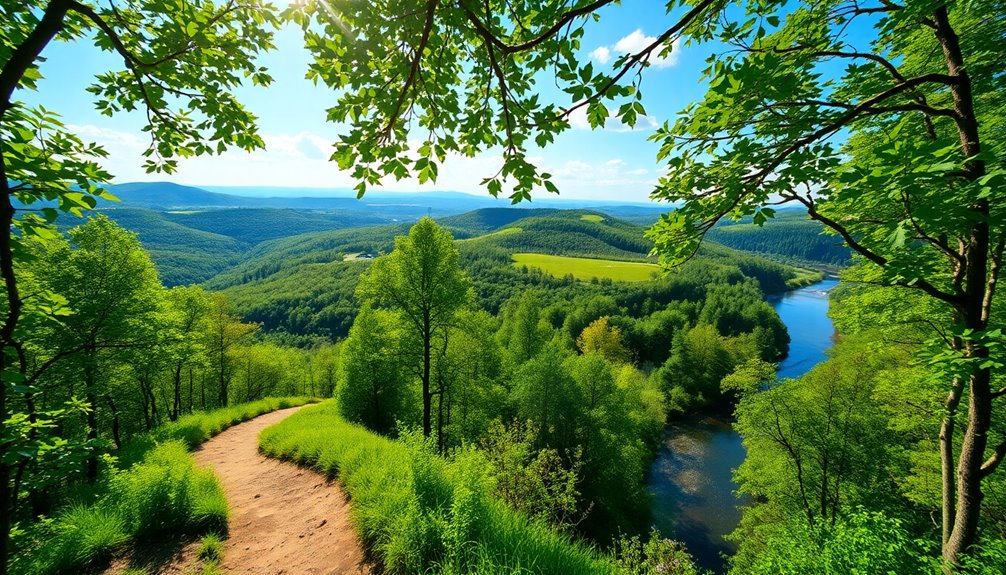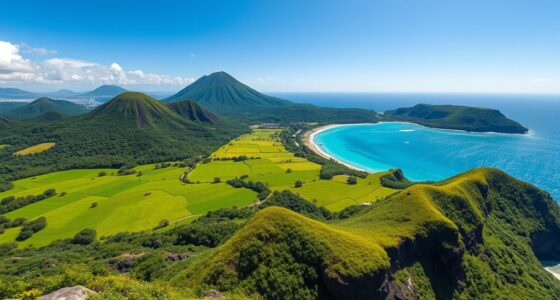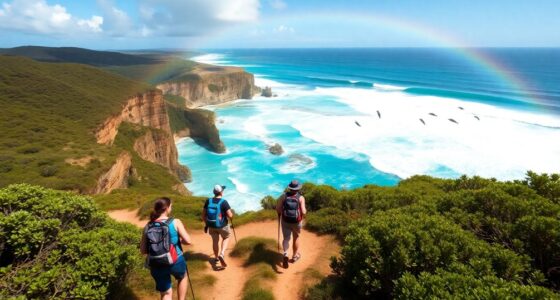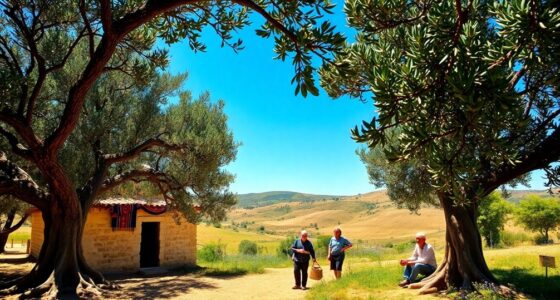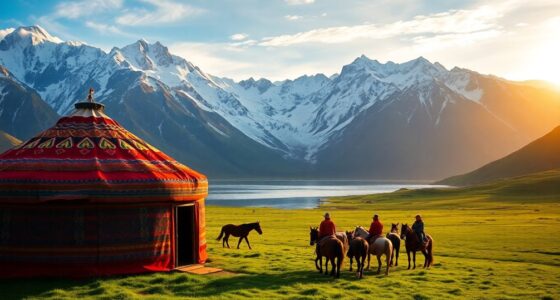You can experience unforgettable green journeys across the United States by exploring stunning landscapes and engaging with local communities. Consider the scenic route from Seattle to Portland, where eco-friendly lodges and vibrant artisan markets await. Visit nature reserves like Glacier National Park or the Everglades to witness diverse wildlife and breathtaking vistas. Utilize sustainable transportation options, such as Amtrak and bike-sharing programs, to reduce your carbon footprint. Traveling during shoulder seasons will help you avoid crowds while supporting local economies. Keep exploring to uncover more eco-friendly adventures that await you on your journey!
Key Takeaways
- Discover Yellowstone's geothermal wonders while observing wildlife on eco-friendly guided tours that prioritize conservation efforts and sustainable practices.
- Experience the breathtaking vistas of the Grand Canyon, combining hiking with community-led initiatives that support local environmental stewardship.
- Travel along scenic routes like Seattle to Portland, utilizing Amtrak for eco-friendly access to charming small towns and local cuisine.
- Stay in eco-lodges that focus on renewable energy and local sourcing, enhancing your travel experience while minimizing your carbon footprint.
- Engage in outdoor activities during shoulder seasons for optimal wildlife observation, fewer crowds, and lower accommodation prices, supporting local economies.
Introduction
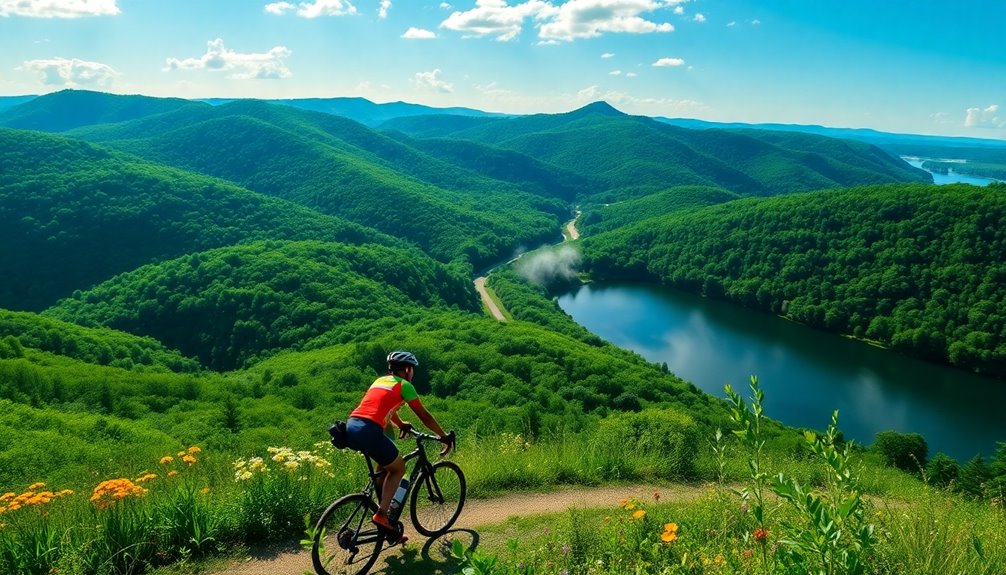
Get ready to explore the stunning natural wonders that the United States has to offer.
By choosing eco-friendly travel options, you not only enjoy these breathtaking landscapes, but you also play a vital role in preserving local ecosystems.
Join the movement towards sustainable tourism and make your adventures unforgettable.
Natural Wonders Await You
As you embark on your next adventure, the natural wonders of the United States await to captivate your senses.
From Yellowstone's geothermal features, including the iconic Old Faithful geyser, to the breathtaking expanses of the Grand Canyon, every destination offers unique experiences.
Explore Olympic National Park's diverse ecosystems, where over 1,400 plant species thrive alongside abundant wildlife, emphasizing the importance of wildlife conservation.
Dive into the Everglades, the largest subtropical wilderness in the U.S., where endangered species like the Florida panther roam freely.
Don't forget Glacier National Park, showcasing climate change effects while you hike its 700 miles of trails.
Embrace sustainable practices and uphold environmental stewardship as you explore these stunning landscapes, ensuring their beauty endures for future generations.
Preserve Local Ecosystems Effectively
To effectively preserve local ecosystems, it's essential to engage with the communities that thrive within them.
By participating in community-based tourism initiatives, you empower local populations and ensure that a significant portion of tourism revenue supports local conservation efforts.
Embrace responsible tourism practices, like following Leave No Trace principles, to minimize your environmental impact.
Volunteering with habitat restoration or wildlife rehabilitation projects offers you immersive experiences while directly benefiting these ecosystems.
Support eco-friendly businesses that prioritize sustainable travel, use renewable energy, and source materials locally.
Join guided eco-tours led by knowledgeable locals to deepen your understanding of the environment and foster appreciation for nature, which is crucial for effective conservation efforts.
Incorporating practices such as aromatherapy for relaxation can enhance your overall well-being while you explore these natural landscapes.
Your choices can make a real difference!
Travel From Seattle to Portland
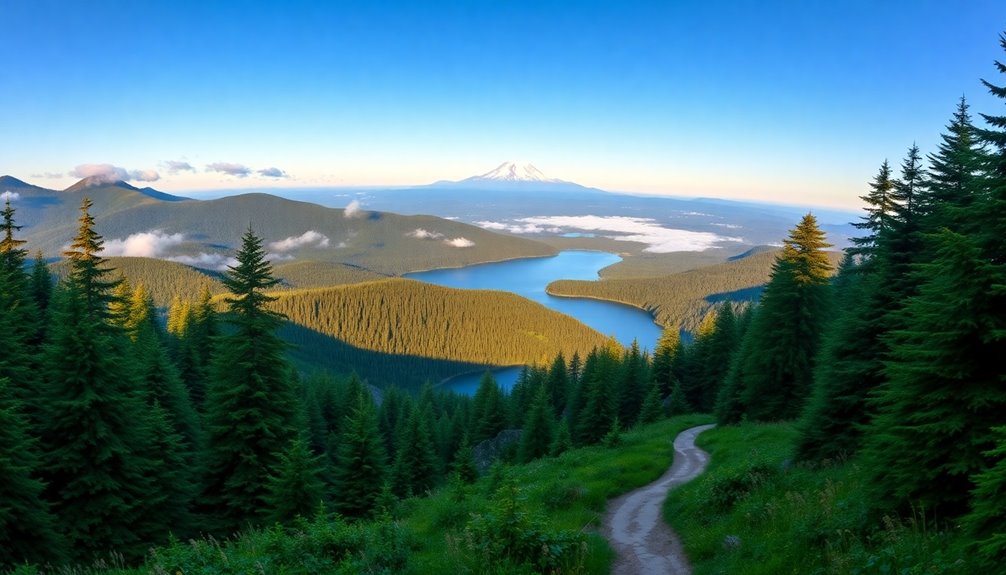
Traveling from Seattle to Portland offers you a chance to experience stunning landscapes along the way.
You can explore local farmers markets, hike through the Columbia River Gorge, or even hop on the Amtrak Cascades for a greener journey.
Each option not only connects the two cities but also emphasizes eco-friendly practices you can embrace.
Travel From California to Oregon
While the journey from Seattle to Portland is often celebrated for its stunning coastal views, the drive from California to Oregon offers its own remarkable experiences that shouldn't be missed. This route emphasizes sustainable travel, showcasing eco-friendly accommodations and inviting farm-to-table dining experiences.
| Highlights | Details |
|---|---|
| Scenic Route | California's coastal cliffs and Oregon's lush forests |
| Eco-Friendly Stops | Visit vineyards and farmers markets along the way |
| Reduced Carbon Footprint | Utilize public transport options like Amtrak |
Explore charming small towns and enjoy the local cuisine, all while minimizing your carbon footprint. This journey combines breathtaking nature with an eco-conscious mindset, making it an unforgettable experience. Additionally, many of the regions along this route utilize solar energy solutions, enhancing the sustainability of your travel experience.
Fly From London to Denver
How can you make the most of your journey from London to Denver? Start with a flight that typically takes 9 to 11 hours, connecting you to the stunning Rocky Mountains.
Once you arrive, embrace sustainable travel by renting an electric vehicle to explore Denver and beyond, significantly reducing your carbon footprint.
As you embark on a scenic road trip to Portland, marvel at the diverse ecosystems along the Pacific Northwest.
Remember to prioritize environmental awareness by choosing eco-friendly accommodations in both Seattle and Portland.
You'll find plenty of local farmers markets and outdoor activities that promote responsible tourism practices.
This trip isn't just about the destination; it's about making environmentally conscious choices along the way!
Fly From Sydney to Seattle
After soaking in the sights of Denver's vibrant culture and stunning landscapes, your next adventure takes you across the Pacific to Seattle.
The flight from Sydney to Seattle takes about 14 to 15 hours, but it's worth it as you dive into the Pacific Northwest's eco-friendly attractions.
Once you land, hop on a scenic Amtrak train to Portland, only 170 miles away. This journey not only reduces your carbon footprint but also treats you to breathtaking views of the Cascade Mountains.
In Portland, you'll find bike-friendly paths, farmers' markets brimming with local produce, and eco-lodges that embody sustainable travel practices. Additionally, consider exploring the nearby pop-up camper options to experience nature while maintaining waterproofing protection against the elements.
Both cities invite you to engage with nature while embracing their commitment to green initiatives.
Biking Through Urban Trails
Ever wondered how to experience the stunning beauty of the Pacific Northwest while staying eco-friendly? Biking from Seattle to Portland is your perfect adventure!
With over 200 miles of dedicated biking trails, including the Burke-Gilman Trail and the Willamette River Greenway Trail, you'll enjoy breathtaking views of the Cascade Mountains and lush forests.
Take your time to explore charming towns like Tacoma and Vancouver, and don't miss the chance to stop at local farmers' markets. Supporting local farmers and opting for sustainable dining along the way makes your journey even more rewarding.
Plus, with bike-sharing programs available, you can easily reduce your carbon footprint without needing your own bike. Consider enhancing your trip by investing in a camper conversion to enjoy off-grid living and greater mobility during your adventures.
Get ready for an unforgettable green journey!
Nature Reserves and Wildlife Sanctuaries
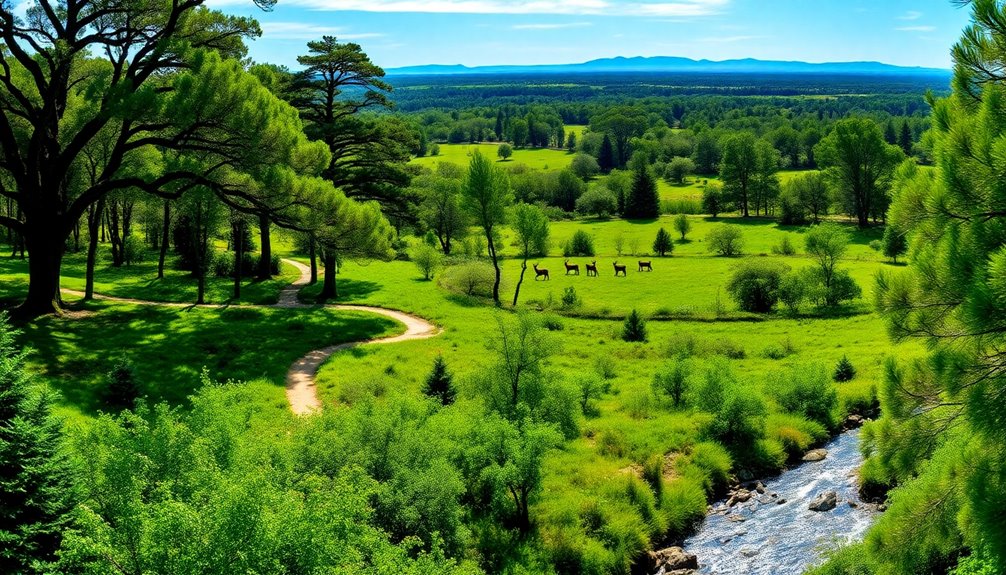
When you visit nature reserves and wildlife sanctuaries, you can immerse yourself in the beauty of diverse ecosystems while also making a difference.
Consider joining wildlife conservation volunteer opportunities or signing up for wildlife watching tours to experience these habitats up close.
Plus, you'll find sustainable lodging options nearby, allowing you to enjoy your adventure responsibly.
Wildlife Conservation Volunteer Opportunities
If you're looking to make a meaningful impact on wildlife conservation, volunteering at nature reserves and wildlife sanctuaries offers a unique opportunity to get involved.
You'll assist with habitat restoration, animal rehabilitation, and monitoring endangered species, directly contributing to vital conservation efforts. Many programs, like those from the Wildlife Conservation Society, provide training that empowers you to gain valuable skills while supporting the local economy.
Engaging in research projects allows you to collect data on wildlife populations, helping shape future conservation strategies.
With flexible options ranging from one week to several months, you can immerse yourself in stunning natural settings across the United States, all while making a difference in the lives of countless animals.
Wildlife Watching Tours
Have you ever dreamed of witnessing wildlife in their natural habitats? Wildlife watching tours in the United States offer you that chance, especially in renowned nature reserves like Yellowstone National Park. Here, you can see bison, elk, and grizzly bears up close.
Many eco-tourism companies focus on sustainable practices, using electric vehicles or bicycles to minimize your carbon footprint. Guided tours in sanctuaries, such as the San Juan Islands' Whale Museum, educate you about marine conservation while you spot orcas and humpback whales.
Sustainable Lodging Options Available
Choosing sustainable lodging options not only enhances your travel experience but also aligns with eco-friendly values.
Many nature reserves and wildlife sanctuaries across the United States offer sustainable accommodations that prioritize renewable energy and environmentally responsible materials. For instance, eco-lodges in the Great Smoky Mountains National Park allow you to connect with nature while reducing your carbon footprint through energy-efficient practices. Staying at these lodges supports local economies, as they often source food and materials from nearby farms and artisans. Additionally, you can participate in educational programs about conservation efforts, learning how to protect local ecosystems. These experiences often reflect the principles of sustainable tourism practices, ensuring that your travel choices contribute positively to the environment.
Eco-Friendly Local Transportation Options
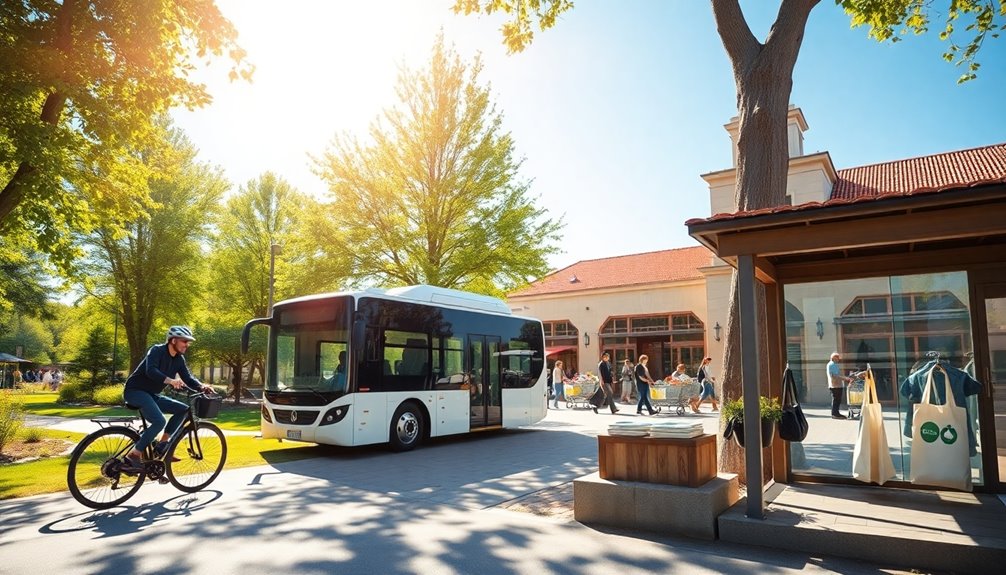
Exploring eco-friendly local transportation options can transform your travel experience while minimizing your carbon footprint.
Utilizing public transport systems like buses and trains is a sustainable choice, with Amtrak providing eco-friendly alternatives across the U.S.
In cities like San Francisco and Portland, extensive bike-sharing programs allow you to explore urban areas sustainably and promote a healthy lifestyle.
If you prefer road trips, consider renting electric vehicles, which reduce greenhouse gas emissions.
Walking tours offer immersive experiences while engaging with local cultures and attractions.
Additionally, carpooling and ride-sharing services, such as Lyft and Uber, provide convenient alternatives to single-passenger vehicles, effectively decreasing traffic congestion and emissions.
Incorporating efficient heating methods like wood stoves can further enhance your eco-friendly travel by promoting sustainable living practices.
Choose these options to make your journey both enjoyable and environmentally responsible!
Community-Led Environmental Projects
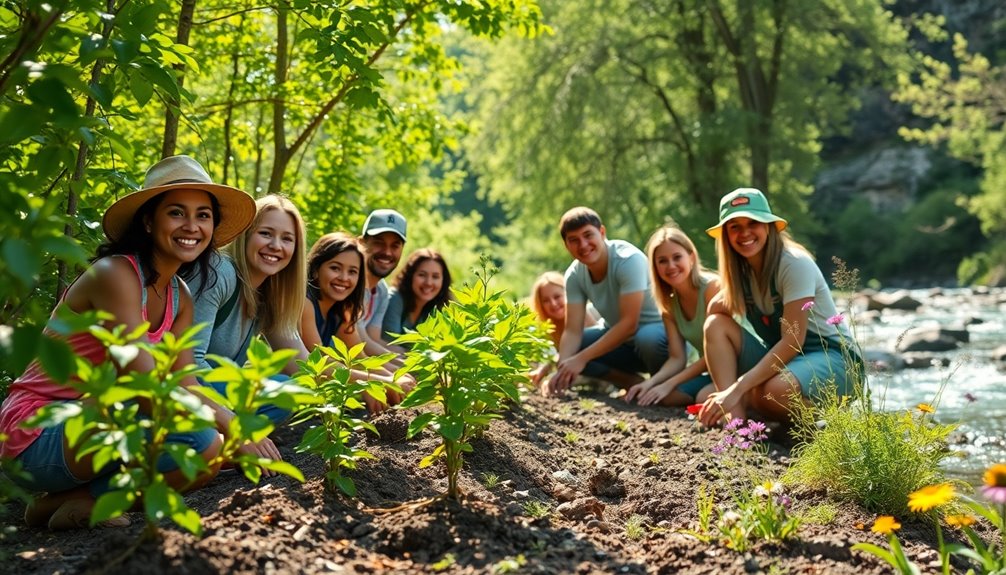
Community-led environmental projects are vital for promoting sustainability and connecting people with their surroundings. You can see how local residents often team up with government and NGO efforts to restore habitats and enhance cultural heritage. Additionally, these initiatives can provide opportunities for community engagement and foster a sense of responsibility towards environmental stewardship.
Government and NGO Efforts
While many individuals might feel overwhelmed by environmental challenges, various government and NGO initiatives across the United States demonstrate that community-led projects can make a significant impact.
The National Oceanic and Atmospheric Administration (NOAA) actively supports coastal restoration through volunteer programs, while the Environmental Protection Agency (EPA) empowers communities via its Community Action for a Renewed Environment (CARE) program.
Nonprofits like The Nature Conservancy engage locals in conservation efforts aimed at protecting 1 billion acres by 2030. Moreover, initiatives like those from the Arbor Day Foundation have led to the planting of over 350 million trees, enhancing urban greening.
Together, these efforts show how community-led actions, supported by government and organizations, can transform our environmental landscape.
Community and Cultural Sustainability
When local residents take charge of environmental initiatives, they not only foster community ties but also create lasting change in their neighborhoods.
Community-driven sustainability programs often focus on local biodiversity preservation, like urban tree planting, which enhances air quality and restores habitats. By engaging residents, these projects cultivate a sense of ownership and responsibility, leading to increased participation in conservation efforts and sustainable practices.
Educational components, such as workshops, help you understand the importance of preserving local ecosystems and reducing your carbon footprint. Additionally, implementing energy-efficient solutions like heat pump technology can significantly lower community carbon emissions and enhance overall sustainability.
Successful examples include the revitalization of the Los Angeles River, where community collaboration transformed neglected areas into vibrant green spaces.
Together, you can influence policies that promote sustainable land use and protect natural resources for future generations.
Shoulder Season for Fewer Crowds
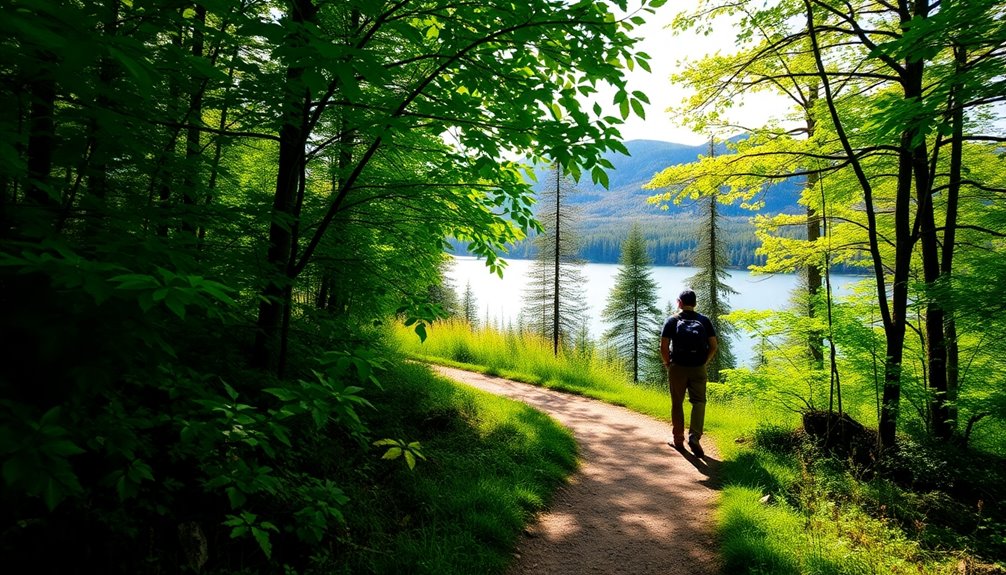
Traveling during the shoulder season, typically in spring or fall, can offer you the best of nature with fewer crowds and more affordable prices.
You'll experience milder temperatures and clearer skies, perfect for outdoor adventures.
Plus, visiting during these optimal months helps support local economies while minimizing the strain on natural resources.
Optimal Months for Nature Visits
Have you ever wondered how to experience the beauty of national parks without the crowds? Visiting during the optimal months—late spring (May) and early fall (September to early October)—can significantly reduce crowd sizes and provide an immersive nature experience.
Wildlife is often more active during these times, as animals emerge from hibernation or prepare for winter, making for great observation opportunities. Plus, accommodation prices drop, giving you access to budget-friendly and ecologically friendly options.
Parks like Yellowstone and Yosemite boast fewer closures and more accessible trails, enhancing your outdoor activities like hiking and camping. By choosing these months, you not only enjoy nature but also support local economies while minimizing your environmental impact. Additionally, a clean and organized environment can promote better sleep quality, ensuring you feel refreshed and ready for your adventures.
Seasonal Temperature Variability
Choosing to visit during the optimal months not only helps you escape the crowds but also allows you to experience the benefits of seasonal temperature variability.
By traveling during the shoulder season, you can enjoy national parks like the Grand Canyon with mild temperatures and breathtaking views, all while minimizing your carbon footprint.
Fewer visitors mean less strain on natural resources, aligning with sustainable living practices that promote responsible tourism.
Plus, you'll often find lower accommodation costs, making your travel experiences even more enjoyable.
Engaging in outdoor activities like hiking or wildlife viewing becomes more rewarding, as animals are more active when the crowds are thinner.
Embrace the beauty of nature while prioritizing both adventure and sustainability! Additionally, consider visiting some of the best water parks, such as Kalahari Resorts in Ohio, for a fun-filled day that complements your eco-friendly journey.
How to Make Your Trip More Sustainable
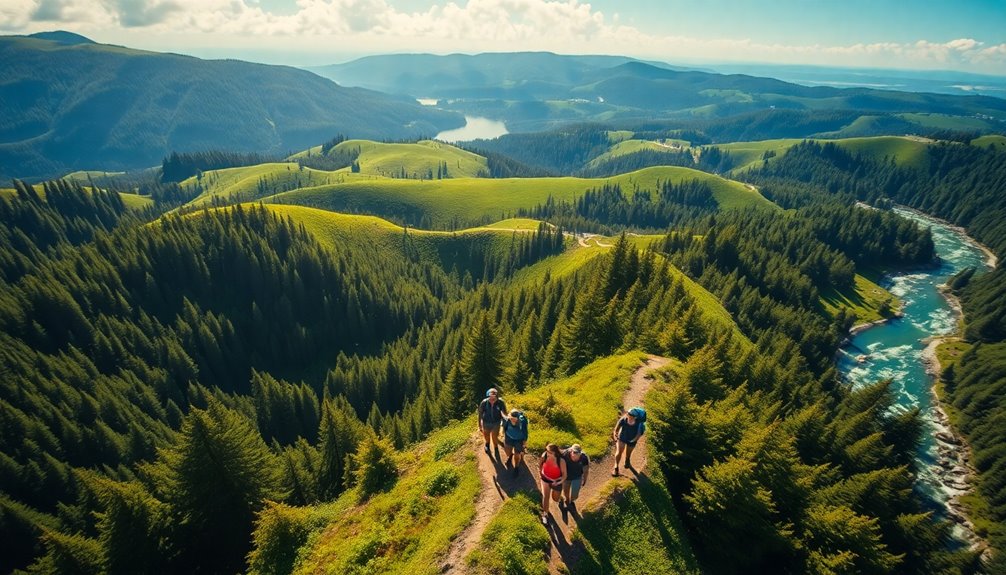
To make your trip more sustainable, start by using reusable containers for snacks, which cuts down on single-use plastics.
Supporting local artisans and markets not only enriches your experience but also helps boost the local economy.
Reusable Containers for Snacks
While exploring the great outdoors, you can make your journey more sustainable by switching to reusable containers for snacks. Using glass or stainless-steel containers not only keeps your snacks fresh but also helps reduce plastic waste, which adds to the over 1 billion tons of waste generated by tourism annually.
Plus, this choice promotes healthier eating habits by minimizing harmful chemicals leaching into your food. Packing your snacks in these durable containers aligns with Leave No Trace principles, ensuring you leave nature just as you found it.
Not to mention, you'll save money compared to buying overpriced snacks on-the-go. Enhance your travel experience with insulated containers, allowing you to enjoy fresh, temperature-controlled snacks while reducing your impact on the environment.
Support Local Artisans and Markets
When you support local artisans and markets, you not only discover unique treasures but also contribute to the sustainability of the communities you visit. By shopping at farmers' markets, you enjoy fresh, seasonal produce while minimizing your carbon footprint. Engaging with local artisans through workshops or demonstrations enriches your experience, fostering cultural appreciation.
| Benefits | Actions |
|---|---|
| Supports local economy | Buy handmade crafts |
| Promotes sustainable practices | Dine at locally sourced restaurants |
| Reduces carbon footprints | Shop at farmers' markets |
Choosing locally sourced items ensures your travel promotes sustainable tourism and strengthens local economies. So, next time you travel, dive into the vibrant artisan scene and savor the flavors of the community!
Frequently Asked Questions
How Can We Travel Green?
To travel green, you can start by choosing eco-friendly accommodations that prioritize sustainability.
Use public transportation or bikes to explore your destination, reducing carbon emissions.
Packing light helps decrease fuel consumption during your journey.
Get involved in local conservation efforts, like beach cleanups, to make a positive impact.
Lastly, dine at farm-to-table restaurants to support local economies and minimize transportation emissions.
Every small step contributes to a more sustainable travel experience.
How to Have an Eco-Friendly Vacation?
To have an eco-friendly vacation, start by choosing accommodations with green certifications that align with sustainable practices.
Use public transportation, bike rentals, or walk to explore your destination, reducing your carbon footprint.
Pack lightly to lessen fuel consumption during travel.
Participate in local conservation efforts, like beach cleanups, to give back to the community.
Finally, enjoy meals at farm-to-table restaurants that support local economies and minimize food transportation emissions.
Is There a Way to Travel Sustainably?
Absolutely, you can travel sustainably! Start by using public transportation instead of driving; it can cut your emissions significantly.
Choose eco-friendly accommodations that prioritize energy efficiency and waste reduction.
Engage in community-based tourism to support local economies and foster authentic experiences.
Consider carbon offset programs when booking flights to mitigate your travel impact.
Lastly, travel during shoulder seasons to avoid crowds and enjoy lower prices, benefiting both you and the local community.
Conclusion
As you plan your unforgettable green journey, remember that eco-conscious travel can make a real impact. Did you know that if just one in ten Americans chose sustainable travel options, it could reduce carbon emissions by 3.6 billion tons annually? By opting for nature reserves, using local transport, and supporting community projects, you're not just exploring beautiful landscapes—you're also helping to protect them. So get out there, travel green, and make a difference!

